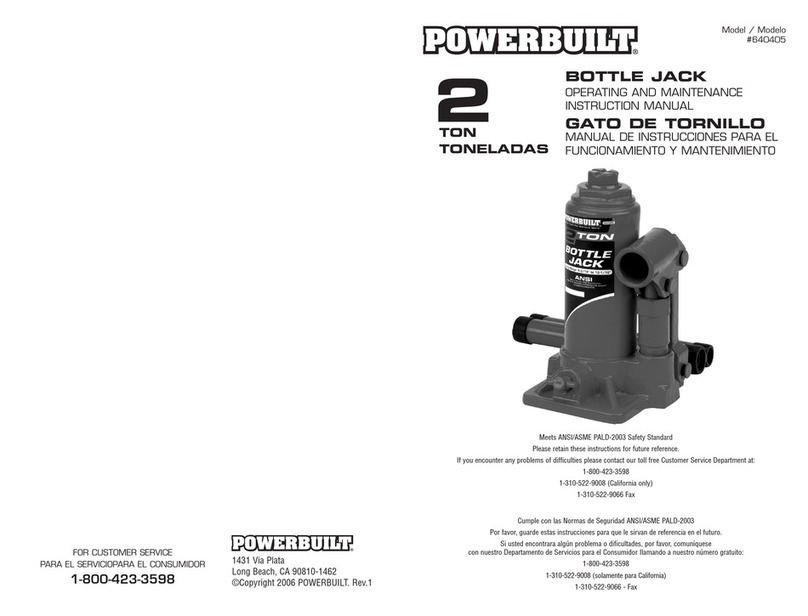
Safety Precauons
Follow OSHA Standards and ASME PALD Part 10 Instrucons.
Never exceed the jack’s rated load capacity.
Only li vehicles at the recommended li points found in the vehicle’s service
manual.
Eye protecon should be worn per OSHA recommendaons.
Always use the jack on a smooth, hard, level surface.
Keep the load centered on the saddle.
Always check the jack prior to each use and do not use jack if any defect is ob-
served.
Do not add accessories or make any modicaons to the jack in any way.
Always use jack stands under the vehicle and stay clear when liing or lowering
the vehicle.
Preventave Maintenance
Inspect the jack before each use. Take correcve acon before using the jack if
a leak or defect is detected.
Keep all working parts thoroughly lubricated. Keep the jack clean. Dirt is the
major cause of jack failure, and all openings should be kept free of debris.
Packing nuts at the piston and pump plunger should be kept moderately ght.
The packing are NOT under high pressure, and should only be ght enough to
prevent leakage.
Keep oil lled to within 1/4” to 3/8” of ll opening. Replace the oil at least
once per year.
Ball valve may be removed for inspecon and cleaning by removing the ball
chamber plug and using a small magnet. Remove the ball and the ball weight.
Important: Whenever it is necessary to loosen or remove the ball chamber
plug, the gasket should be replaced with a new one. Oil leakage at this point is
usually caused by trying to reuse an old gasket over again.




























